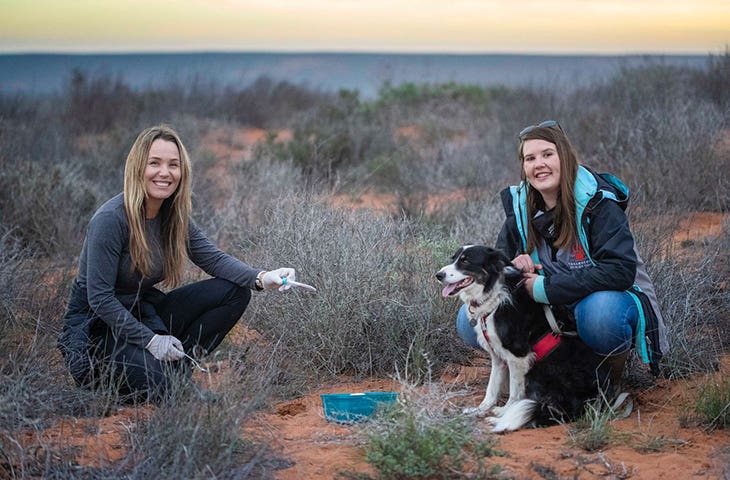Samantha Mynhardt knows how difficult it is to find golden moles. There are 21 species, many of which live in South Africa, but they are elusive. They spend much of their lives tunneling and burrowing underground. If you were to walk on the beach above one of the species that lives on South Africa’s west coast, you probably wouldn’t see signs of them at all.
“If you find ridges on the surface of the soil, characteristic of their subsurface foraging tunnels, you can monitor these for activity by flattening the ridges and then watching for movement as the mole begins to burrow again… but you may have to stand there and stare at the sand for ages,” says Samantha. “Their hearing is so good. If you're standing around or moving around and you're talking to each other, they actually just stop moving, and then you won't see any activity. It's quite important to stand still and be quiet and have some patience.”
Thanks to new environmental DNA (eDNA) techniques, Samantha doesn’t need to physically catch a mole, she only needs to see where it’s been. She analyzes soil samples that the team collects from golden mole tunnels for eDNA. Animals shed DNA as they move through the environment, and Sam can extract and analyze that DNA in the lab. The eDNA can tell her which species of golden mole was in an area.
Every species of golden mole has a unique DNA sequence. Samantha is targeting three genes to determine which of the four coastal golden mole species are living in the sites the Endangered Wildlife Trust has searched. She’s hoping to find a match for De Winton’s Golden Mole, a species that has been lost to science since 1936.
If any of the eDNA samples are a match for De Winton’s Golden Mole, or don’t match the DNA of any other known species of golden mole, it will help the Endangered Wildlife Trust team focus their intensive searches on South Africa’s west coast.

